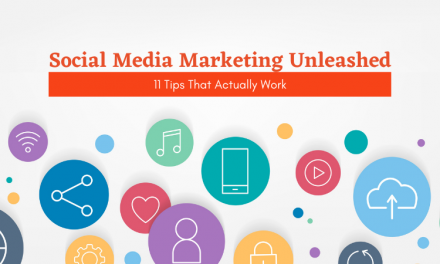For any B2B company that is looking for a way to drive traffic and sales, webinars are a useful tool. If a webinar is done in the right way, it can help a company to generate more good quality leads, which in turn leads to an increase in sales.
Webinar marketing work because they provide an opportunity for companies to engage with an audience in an interactive manner. It is useful when dealing with existing customers, prospects, or potential new leads because interactive features help the audience to remain engaged with a webinar throughout.

Reasons for B2B companies to use webinars
There are several reasons why B2B companies make use of webinars as part of their marketing efforts. The reasons include:
● Increasing awareness of the brand. This awareness is just as critical in the B2B market as it is in the B2C market.
● Generating good quality leads. Leads that are willing to invest time and effort into attending a webinar tend to be hotter leads.
● Building a reputation as an expert. B2B companies need to develop this sort of reputation in order to create leads and sales that they are looking for.
● Creating and nurturing relationships. Driving traffic and sales is not just about creating new leads. It’s also vital to nurture prospects to fruition.
● Generating engagement with a brand. Generating engagement is essential for any B2B company that wants to create new leads while also maintaining its current customer base.
What are the benefits of using a webinar?
The benefits of using webinar marketing as part of a broader marketing strategy are valuable to B2B companies. These benefits include:
Interactivity
Being able to interact with an audience is one of the most significant benefits of hosting a webinar. Participants can react to content in real-time, and companies can create a more reliable link with leads than they can by merely creating video content to be viewed.
Reaching an international audience
For a company that wants to attract prospects internationally, hosting a webinar is an excellent solution. It provides the opportunity to target potential leads located in another country.
Creating a reputation as an expert
A webinar that is carefully thought out and professionally presented can help a B2B company stand out as an expert in its field. This makes it more likely that relationships will be developed and sales will get generated.
Also Read:
Video Marketing Strategy: How to Develop a Video for Small Business?
3 Ways To Increase Website Traffic and Conversion Rates for your Business via Social Media
What is involved with running a webinar?
In order to get the most benefit from a webinar, it’s essential for a B2B company to plan, create, and run the event in the right way. Generally, a webinar should last for 30-45 minutes. It can involve a mix of audio, video, slides, and graphics to deliver the information most effectively. There can be a variety of different personnel involved in hosting a webinar, including the actual host, guest experts, and a moderator to manage factors such as interactivity.
Formats for a webinar
There are different formats that can be used when hosting a webinar. The format chosen is based on each webinar and what the company is aiming to achieve. Here are four exciting webinar formats that you can consider.
● Single speaker
This is an excellent format to choose when a webinar has a small audience. One person speaks at the webinar and delivers the content. They also answer any questions that members of the audience may have.
● Interviewing experts
In this type of webinar, one person interviews several experts. It’s the right way of showcasing the expertise of a company. This format also lends itself to being interactive as attendees can have the opportunity to put forward questions to be asked.
● Discussion
Using a panel to discuss a particular subject can work well when trying to engage leads in a specific field. It’s vital that a skilled moderator is chosen as the discussion needs to be informative and must flow well.
● Q&A
This type of content can form an entire webinar, or it can be used at the end of any webinar as the right way of engaging with the audience. The speaker is tasked with answering questions that come directly from the audience. In many cases, it works well to collect questions in advance, so that the timing of the webinar can be managed effectively.
Visuals for a webinar
It’s important to remember that getting the visuals right is a vital aspect of creating a successful webinar. If the visuals do not work, the audience will become disengaged, and the webinar is less likely to lead to an increase in traffic and sales. There are some useful points to take into account:
● Having a good title slide encourages engagement from the start.
● Text should be kept to a minimum on slides. Using relevant graphs, charts, and images work better.
● Using brand colors and graphics promotes brand awareness and engagement.
● When there are a lot of slides, it’s a good idea to choose two or three different slide layouts that complement each other. This helps to maintain audience interest.
● Slides should not be overcrowded, and there should only be one topic per slide.
Selecting a webinar tool
Choosing the right webinar tool is essential for any business that wants to create a high-quality event. The best online tools enable companies to do this easily. As the experts at MyOwnConference say;
“You can get specialist software and tools to help you when it comes to hosting webinars, making the task far simpler.”
There are several webinar tools that can be really useful to use, such as survey and poll creation, to provide insight. Businesses also have the opportunity to link webinar tools with analytics tools in order to measure the effectiveness of their efforts.
The objectives of a webinar
In most cases, a webinar forms part of the overall marketing strategy of a business. However, the objective of a webinar should never be solely to sell a product or service.
The aim of a webinar, for a B2B company, is to show its expertise and why other companies should reach out to create a relationship. Companies need to consider this when they are deciding on the specific objectives of a webinar.
Equipment and space
A company may have developed a webinar that it’s confident will drive traffic and sales, but this will not happen if attention is not paid to the equipment that is used. Equipment should be thoroughly tested on site beforehand. It’s also a good idea to have a backup laptop and mic in hand. When setting up equipment, it’s crucial to choose a location where there is no background noise that may interfere with the quality of a webinar.
Promoting a webinar
Webinar marketing only work if they have an audience. In order to attract this audience, a company needs to promote its webinar. There are several different methods of publicizing a webinar that a company may want to use, including:
● Guest posting in reputable blogs.
● Using a LinkedIn group.
● Using hashtags on social media.
● Creating a Facebook advertising campaign.
It’s never a good idea to try to cut corners when promoting a webinar as attracting the right audience is vital for any company that wants to succeed in driving traffic and sales.
Following up with attendees
This is an integral part of running a webinar that is often neglected. It’s vital to engage with a webinar audience again after the webinar has ended. Doing this creates an opportunity to develop relationships further, secure leads, and increase sales.
One of the best ways to follow up with attendees is to send an email thanking them for attending and asking for feedback. A sign-up for future webinars can be included. An email should also be sent to people who were not able to attend. A link to the recording of the webinar should be included. Taking these actions makes it more likely that good quality leads will be secured.
In summary
When used as part of an overall marketing strategy, a webinar can be an excellent way of driving traffic and sales for B2B companies. It provides them with the opportunity to engage with large numbers of prospects in a direct and cost-effective manner.
Webinars are fast becoming one of the best places to engage with high-quality leads and persuade them of the value and benefits that developing a business relationship could bring.
In order to get the optimum amount of benefit from hosting a webinar, a company needs to plan and complete the process of creating a webinar that works. This includes creating content that is of value and is presented in an effective way visually. It also includes using a high-quality webinar tool and reliable equipment. This helps to ensure that the viewing quality is high.
These considerations come together to form the process of creating a webinar that engages an audience. Doing this is instrumental in helping a B2B company to drive traffic and sales.






Recent comments